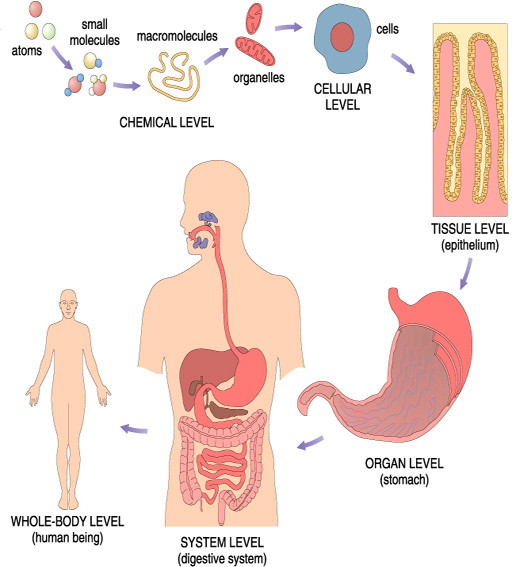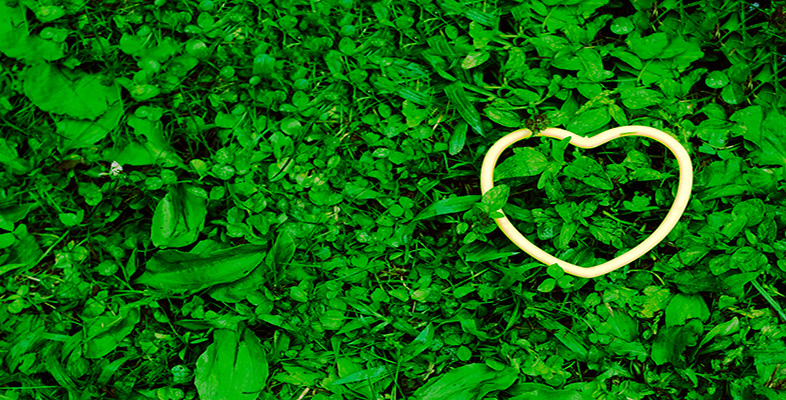2.4 The body's different components
Looking at the body this way means thinking about things as small as atoms and molecules, and as large as whole body parts. This allows us to think about how everything works at an appropriate level. If we want to understand breathing, for example, we need to think about tiny things such as the oxygen molecules that are absorbed in the body. Similarly, if we want to understand eating, we have to think of complicated internal structures such as the stomach. If we want to understand how the body moves, we have to think about body parts such as arms and legs. The figure shows the different levels that we need to think about.

Activity 2: What I need to do
Read the discussion below to find out about the different levels of focus.
Discussion
Atoms and molecules: These are the smallest things that we need to consider. Atoms are the smallest building block of matter – the iron and calcium that our body needs are examples of single atoms. Molecules are combinations of atoms. Small molecules such as oxygen, which contains two atoms, and larger ones such as sugar molecules, which contain many more atoms, play an important role in the body.
Cells: The next stage in our tour of the body is the human cell. Cells are the smallest biological building blocks in the body, and are structures made of many atoms and molecules. The figure shows a simple cell. It has an internal part that might contain a variety of different molecules. It also has a barrier around the outside, called a membrane, that acts as a wall between the cell interior and the outside. Small particles, such as some molecules, can move in through the wall and out again, but larger ones cannot. There are many different types of cell. Each type has a limited number of functions, sometimes only one. For example, some cells in the liver take in alcohol molecules (which are a kind of poison in the body) and turn them into less harmful substances.
Body tissue: The next level up from cells is body tissue. This is biological material that is made up of combinations of many cells, put together in some particular structure. There are many types of body tissue. For example, we have fat tissue under our skins and muscle tissue in our muscles.
Body organs: We are now coming into more familiar territory, when we talk about the body organs such as the heart, the stomach and the liver. These are complicated biological structures made up of various combinations of different types of body tissue. Each body organ has a particular role in the body.
Body systems: These are combinations of organs and other body parts that have a specific role in the body. We have already seen some of these – the cardio-respiratory system (containing the heart and lungs, amongst other things) and the muscular-skeletal system. We could add many other systems to that list, such as the digestive system, which processes the food that we eat.
The whole body: This is the final stage in our explanation. The whole body is made up of many different body systems.
How did this compare as a different way of thinking about the body?
